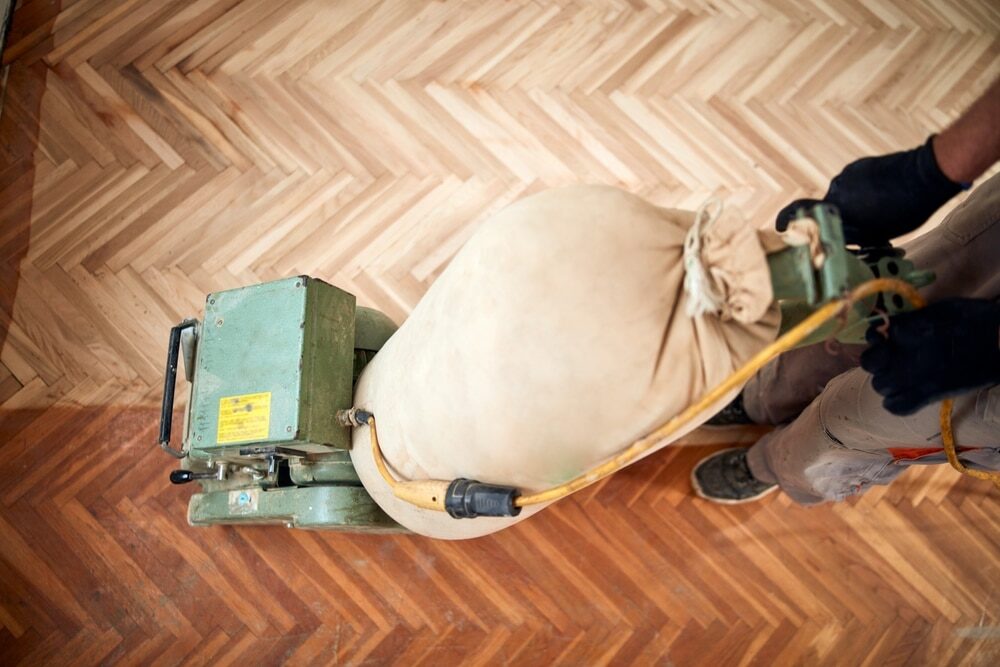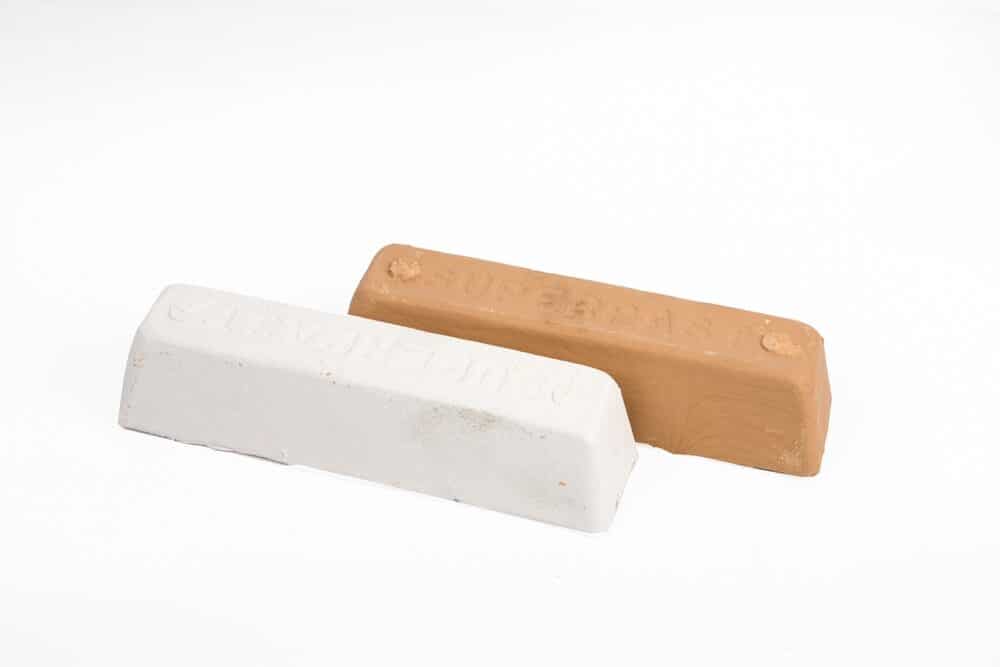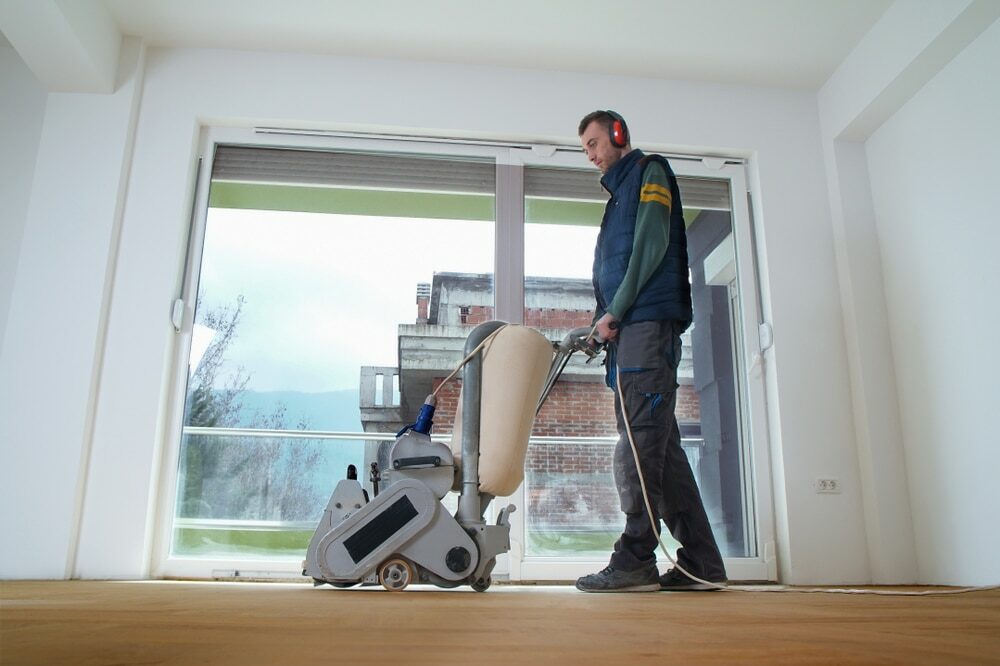London:
Nationwide:
Back to School, Back to New: Transforming Educational Spaces with Granwood Floor Restoration
Posted on April 24, 2024
Granwood School Floors
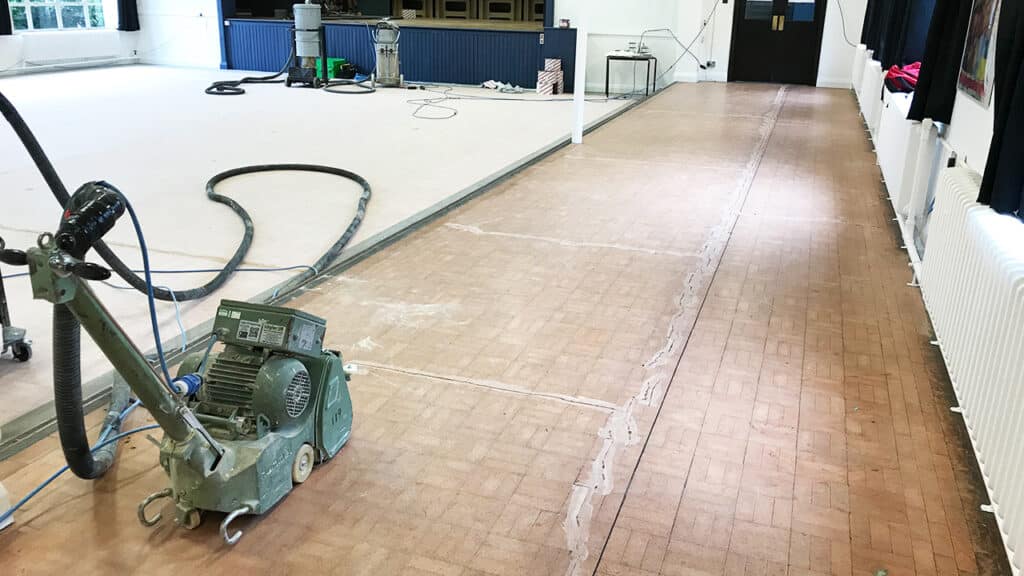
Revitalizing School Environments with Granwood Floor Restoration
As students return to school each year, the condition of the educational environment plays a pivotal role in shaping their learning experience. Among the various aspects of a school’s infrastructure, the flooring might not be the first element that comes to mind, yet it is crucial. One specific type of flooring—Granwood—stands out for its durability and aesthetic appeal, making it a popular choice in schools and educational facilities worldwide. This blog post delves into the transformative power of restoring Granwood flooring in schools. We will explore how refreshing these floors not only enhances the physical appearance of educational spaces but also contributes significantly to the safety, comfort, and overall atmosphere conducive to learning. With the back-to-school season upon us, it’s the perfect time to consider how revamping educational spaces can positively impact students and staff alike. Join us as we uncover the benefits of Granwood floor restoration, providing a fresh start and a renewed environment for everyone in the educational community.
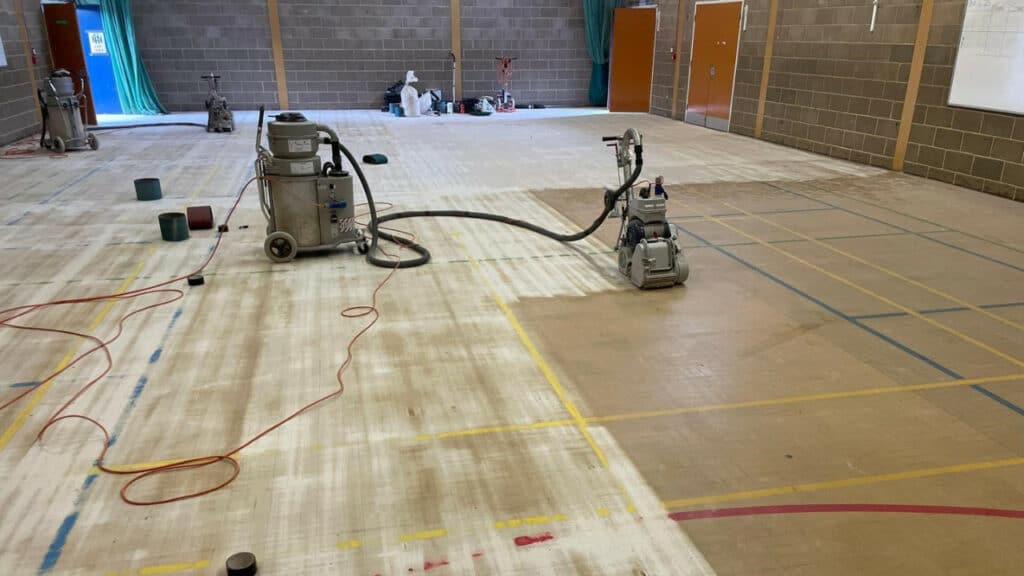
What is Granwood Flooring?
Granwood flooring is a composite material that combines wood flour, cement, and fillers, which are then pressed into dense blocks and tiles. This unique composition results in a flooring option that is both resilient and sustainable, making it highly suitable for high-traffic areas such as schools, sports halls, and public buildings. Recognised for its durability and ease of maintenance, granwood flooring is also appreciated for its aesthetic versatility and the ability to be finished in a variety of colours and patterns.
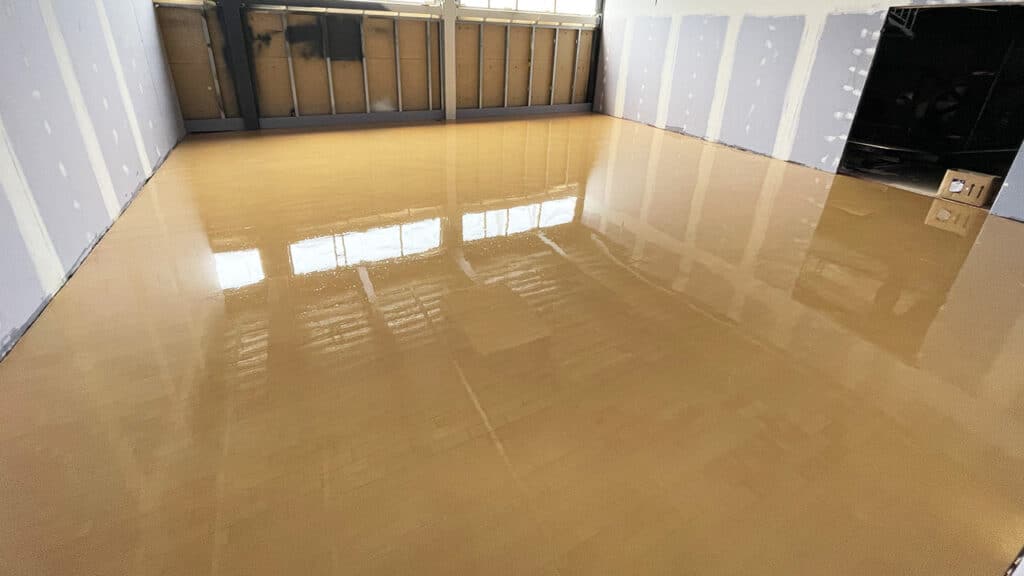
Composition and Characteristics
The core appeal of Granwood flooring lies in its robust structure. The wood flour provides a natural look and feel, while the cement and fillers ensure strength and resistance to wear and tear. Additionally, Granwood floors are resistant to fire and water, reducing the risk of damage in accident-prone environments like schools.
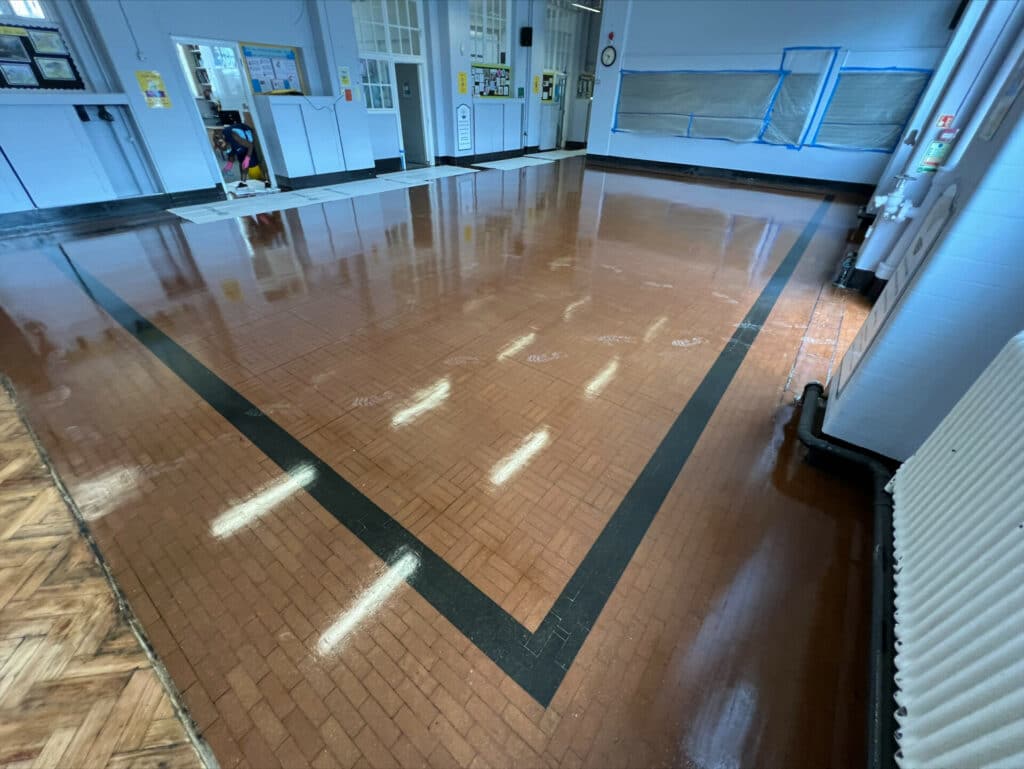
Benefits of Granwood Floors in Educational Settings
In educational settings, the practical benefits of Granwood flooring are manifold. Its durability means it can withstand the daily onslaught of student traffic, spills, and frequent cleaning without showing signs of strain. Its ease of maintenance also makes it a cost-effective choice for budget-conscious educational institutions. Moreover, Granwood’s noise-reducing properties contribute to a quieter, more focused learning environment, which is essential in educational settings where concentration is key.
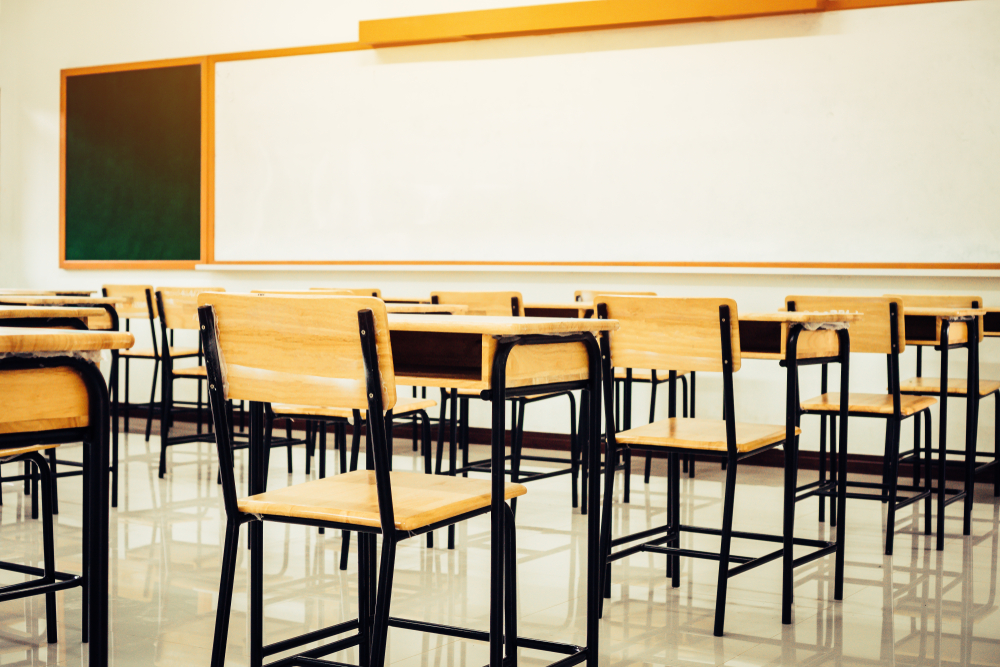
Signs Your School’s Flooring Needs Attention
Regular assessment of a school’s infrastructure is vital for maintaining a safe and inviting educational environment. Flooring, often subjected to intense daily use, requires particular attention. Here are some key signs that your school’s Granwood flooring may need restoration or replacement:
- Visible wear and tear
- Look for areas where the floor appears faded, discoloured, or worn down, especially in high-traffic zones like hallways and entrances. Scratches, chips, and cracks are clear indicators that the flooring is deteriorating.
- Uneven Surfaces
- Noticeable dips, bulges, or unevenness in the flooring can be a tripping hazard and generally indicate underlying issues such as moisture damage or subfloor failures.
- Loose or missing pieces
- Sections of flooring that have become loose or have gone missing compromise both the functionality and aesthetics of the floor, necessitating immediate attention.
- Stains and water damage
- Persistent stains or signs of water damage, such as swelling or warping of floor tiles, suggest that the floor’s sealant may be compromised, allowing moisture to penetrate and damage the material.
- Mould and mildew
- The presence of mould or mildew is a serious concern, indicating excessive moisture and poor air quality, which can have health implications for students and staff.
- Unpleasant Odours
- An unusual or musty odour can signal mould, mildew, or trapped moisture beneath the flooring surface. Such odors are often more noticeable after long periods of the building being closed, like summer vacations.
- Acoustic Problems
- If the floor no longer provides sufficient noise dampening, it might be due to deterioration of the material, affecting the acoustic properties of the environment and potentially disrupting learning.
Addressing these issues promptly can prevent more extensive and expensive repairs later, while also ensuring that the school environment remains safe, functional, and aesthetically pleasing for all users.
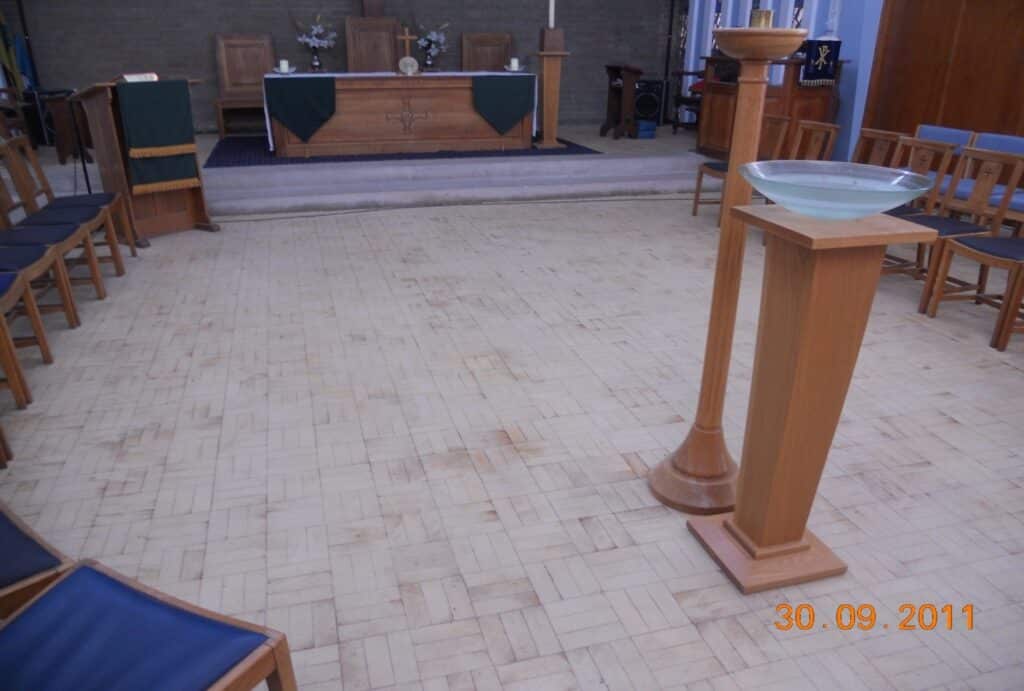
The Restoration Process
Restoring Granwood flooring is a detailed process that requires precision and careful planning. Here is a step-by-step guide to restoring Granwood flooring, which can help extend its life and enhance its appearance:
Inspection and assessment
The first step is to thoroughly inspect the flooring for any signs of wear, damage, or deterioration. This will help determine the scope of the restoration needed, whether it involves repairing, sanding, or completely refinishing the surface.
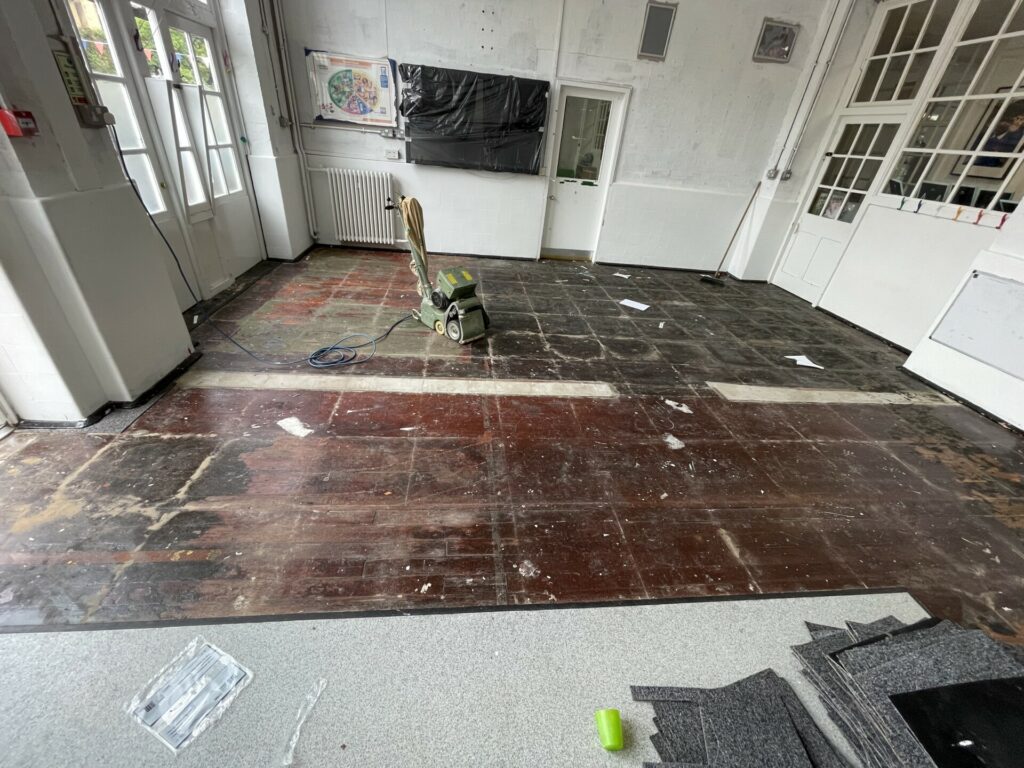
Repairing Damages
Any cracks, chips, or loose areas need to be repaired. For Granwood floors, this often involves filling the damaged spots with a matching compound that blends seamlessly with the existing floor.
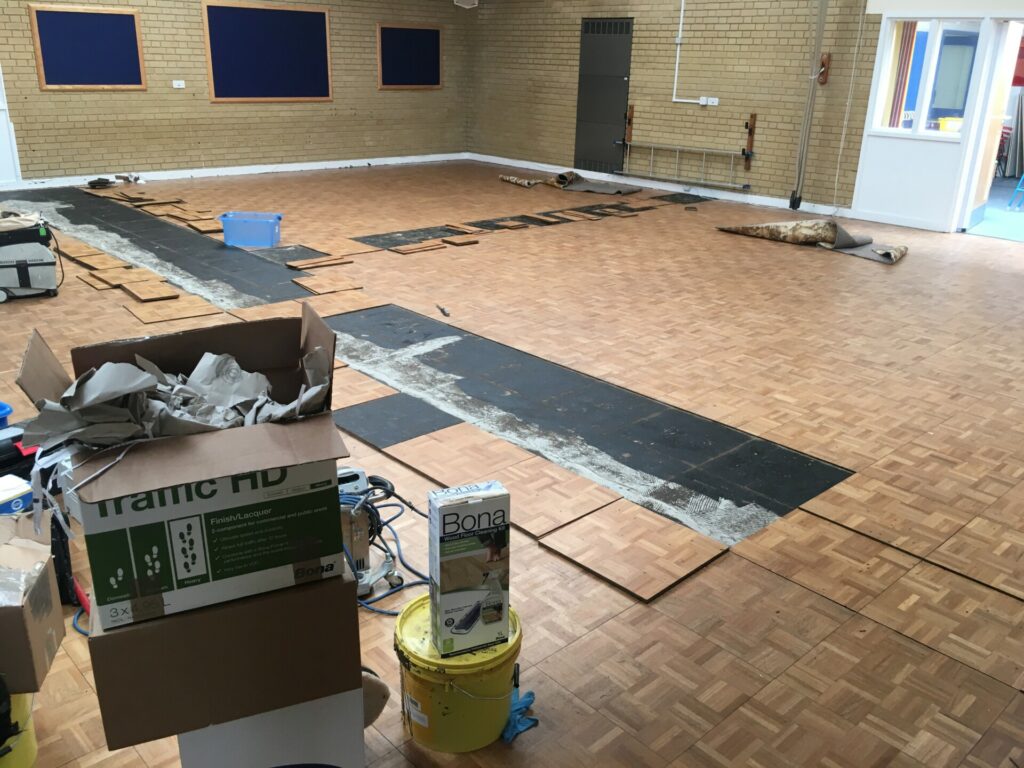
Cleaning
Before any sanding or refinishing takes place, the floor must be thoroughly cleaned to remove dirt, debris, and any contaminants that could interfere with the restoration processes.
Sanding
Sanding the floor is critical to removing the old finish, smoothing out the surface, and preparing it for a new finish. Specialized sanding machines are used to ensure an even and level surface.
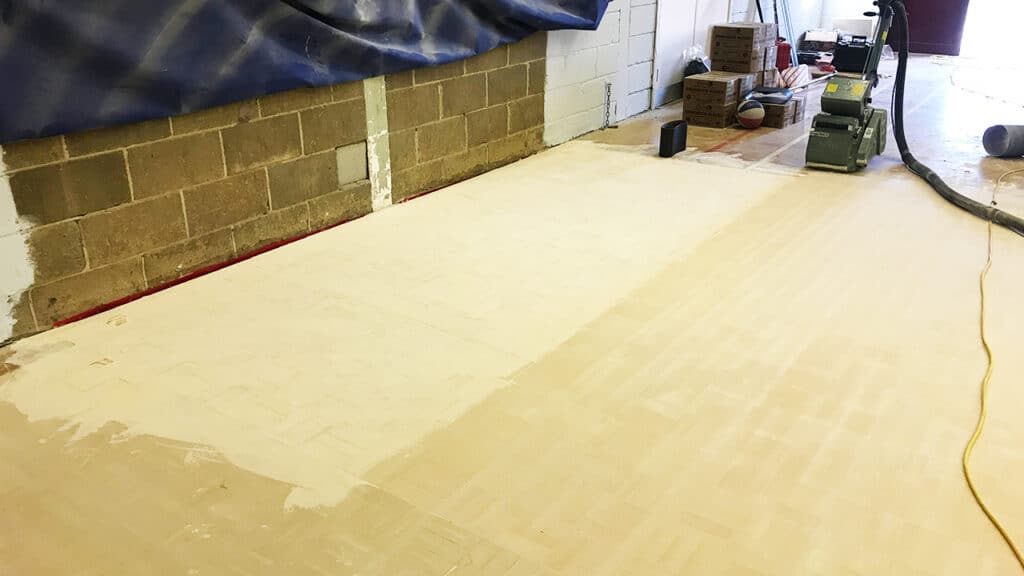
Sealing
Once the floor is sanded and clean, a new sealant is applied. This sealant is crucial for protecting the floor from moisture, stains, and further physical wear. It also enhances the floor’s appearance, bringing out the colour and texture of the material.
Finishing
The final step involves applying a finish to the floor. This finish not only adds a protective layer but can also be chosen to give a desired sheen and coloration to the floor. Finishes can be matte, satin, or gloss, depending on the school’s preference.
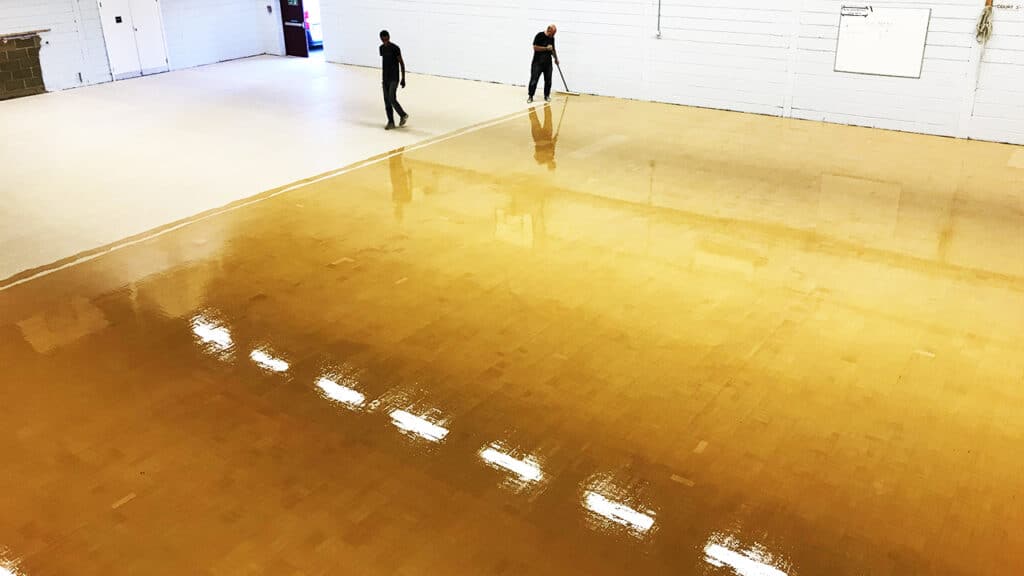
Curing
After the finish is applied, it must be allowed to cure for a specified period. During this time, the floor should not be used to ensure the finish sets properly and achieves maximum durability.
Final Inspection
The restored floor should be inspected thoroughly to ensure all aspects meet quality standards. This includes checking for any missed spots in the repair, an uneven finish, or inadequate sealing.
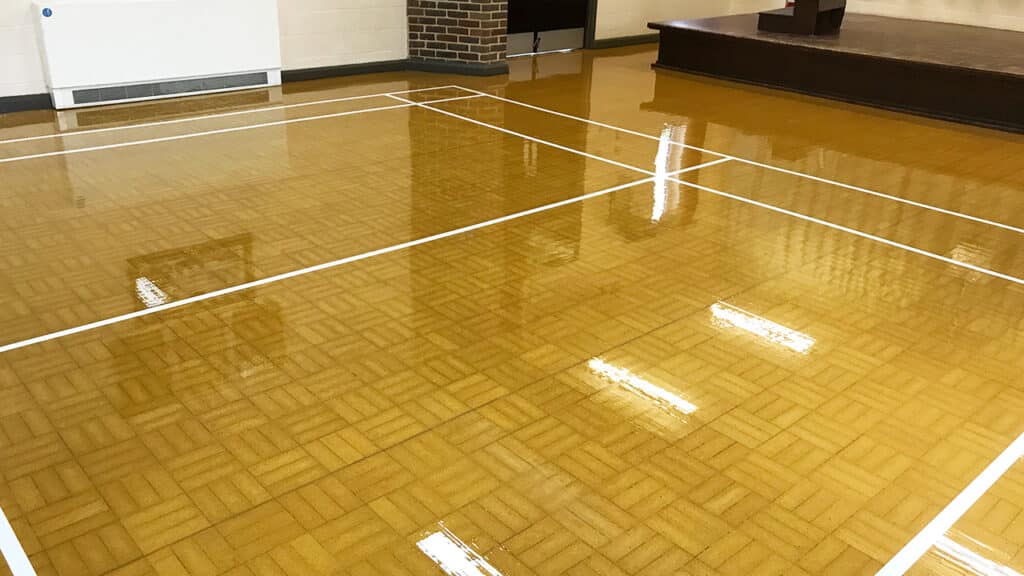
Restoring Granwood flooring not only revitalizes the look of a space but also contributes to a healthier and safer environment for students and staff. Properly executed, this process can significantly extend the life of the flooring, making it a cost-effective solution for educational institutions.
Maintenance Tips for Granwood Floors
Proper maintenance is crucial to extending the lifespan and preserving the aesthetic appeal of Granwood flooring. Here are some effective tips for caring for Granwood floors in educational settings:
- Regular Cleaning
- Sweep or vacuum the floors daily to remove dirt and grit that can scratch the surface. Use a soft brush attachment on the vacuum to avoid damage.
- Mop the floors regularly with a well-wrung damp mop and a neutral pH cleaner specifically recommended for Granwood floors. Avoid using excess water, as it can seep into seams and damage the flooring.
- Immediate Spill Cleanup
- Clean up spills immediately to prevent staining or water damage. Use a damp cloth or sponge and a suitable cleaning agent. For tougher stains, consult the manufacturer’s guidelines for recommended products.
- Use of Mats and Rugs
- Place mats or rugs at entryways to reduce the amount of dirt and grit brought onto the floors from outside. Ensure these are cleaned regularly to maintain their effectiveness.
- Avoid harmful chemicals.
- Never use harsh chemicals, abrasive cleaners, or steel wool on Granwood floors, as these can erode the sealant and damage the surface.
- Furniture Protection
- Use felt pads under the legs of chairs, tables, and other furniture to prevent scratches. Check and replace these pads regularly.
- Floor Polishing
- Depending on the level of traffic, periodically polish the floors to renew the sheen. Always use a polish compatible with Granwood flooring and follow the manufacturer’s application instructions.
- Professional Refinishing
- Over time, the floor might require refinishing to restore its original lustre and repair significant wear. It is advisable to hire professionals experienced with Granwood floors for refinishing work to ensure the best results.
- Sunlight Protection
- Protect the flooring from prolonged exposure to direct sunlight with curtains or blinds, as UV rays can fade and degrade the material over time.
- Humidity Control
- Maintain a stable indoor climate with moderate humidity to prevent the wood component of the flooring from swelling or contracting, which can lead to warping or cracking.
By adhering to these maintenance tips, schools can ensure their Granwood floors remain durable, visually appealing, and safe for everyday use, ultimately contributing to a positive and effective learning environment.
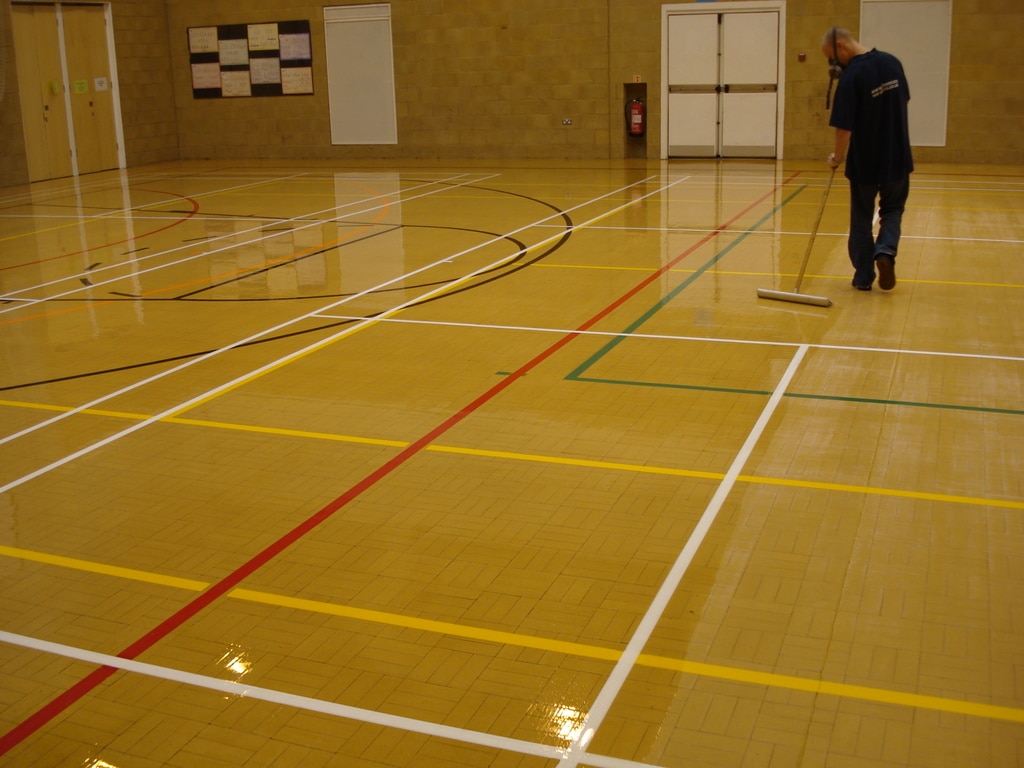
The Impact of Restored Floors on School Culture
The state of a school’s facilities, including its floors, can significantly influence the overall culture and atmosphere of the institution. Restored Granwood floors, in particular, can have a profound effect on several aspects of school life.
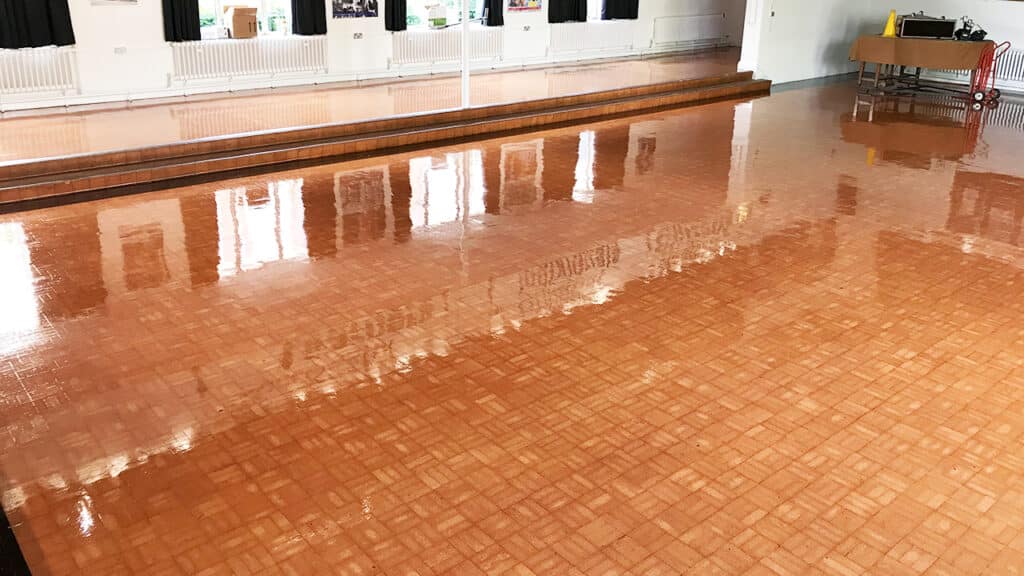
- Enhanced Aesthetics
- Restored floors breathe new life into a school’s appearance, making the environment more welcoming and appealing. Aesthetically pleasing surroundings can boost the morale of both students and staff, fostering pride in their school.
- Improved Safety
- Well-maintained floors reduce hazards such as slips, trips, and falls. By restoring floors, schools can ensure a safer environment, which is critical for reducing accidents and promoting a culture of safety and care.
- Increased Focus on Learning
- A clean, well-maintained environment can minimise distractions, allowing students to focus better on their studies. Restored floors diminish noise levels and enhance comfort, which can improve concentration and academic performance.
- Promotion of Respect and Responsibility
- When students see that their school is well cared for, it can inspire them to treat the property and their surroundings with more respect. This can lead to a greater sense of responsibility and ownership over their environment, reducing vandalism and negligence.
- Boost in School Spirit
- Schools with modern, updated facilities, including flooring, can instill a sense of pride and spirit among students. This pride can be contagious, spreading through the student body and enhancing participation in school activities and events.
- Positive Impressions
- For prospective students, parents, and staff visiting the school, restored floors can make a strong first impression. A well-maintained school can be seen as a proxy for the quality of education and care the institution provides.
- Economic Efficiency
- Restoring floors is often more cost-effective than replacing them. Schools that manage their resources wisely and maintain their facilities demonstrate fiscal responsibility, which can be important to stakeholders like parents and district boards.
- Environmental Impact
- By opting to restore rather than replace flooring, schools contribute to sustainability efforts. This not only impacts the school culture by embedding environmental values but also aligns with the broader educational goals of teaching and practicing sustainability.
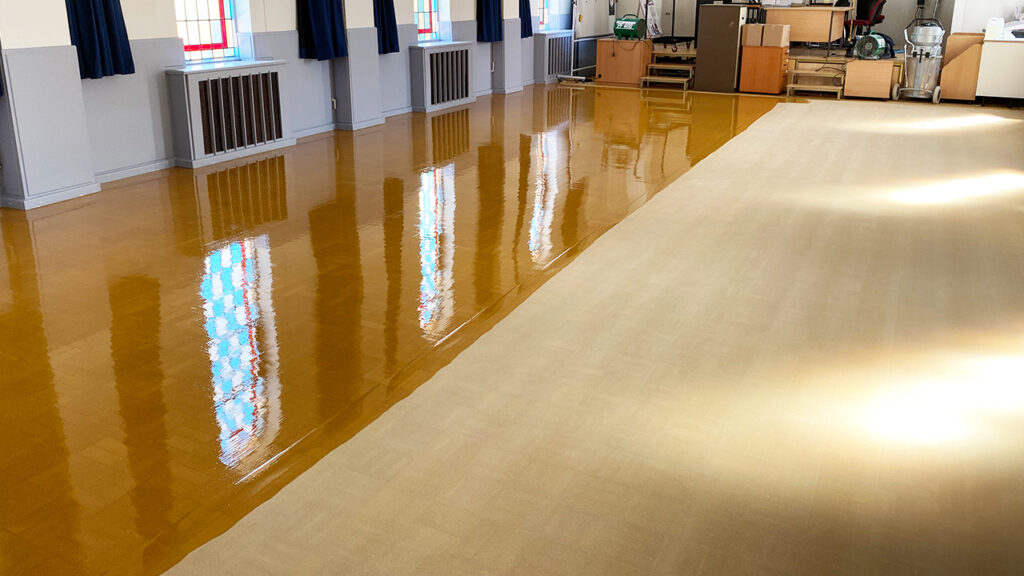
Cost Considerations and Budgeting for Granwood Floor Restoration
When planning for Granwood floor restoration in a school setting, understanding the financial aspects is crucial for effective budget management. Here’s a breakdown of cost considerations and budgeting tips:
- Assessment of Need
- Begin with a thorough assessment of the floor’s condition to determine the extent of restoration needed. This can help avoid unnecessary expenses for areas that may only require minor touch-ups instead of full restoration.
- Get multiple quotes.
- Obtain quotes from several contractors who specialise in Granwood flooring. This will provide a range of cost-effective options and services, allowing for a more informed decision.
- Understand pricing factors.
- The cost of restoration can vary based on several factors, including:
- Size of the area: Larger areas typically cost less per square foot but more overall.
- Condition of the floor: Floors requiring more extensive repairs or preparation work before sealing and finishing will incur higher costs.
- Choice of finishes and sealants: High-quality or specialty products may increase the cost but can be more durable and aesthetically pleasing.
- The cost of restoration can vary based on several factors, including:
- Plan for the Unexpected
- Include a contingency budget of around 10–20% of the total estimated cost to cover unforeseen issues like hidden floor damage or price fluctuations in materials.
- Consider Long-Term Savings
- Investing in high-quality restoration can reduce the need for frequent repairs, yielding long-term savings. Evaluate the cost against the expected lifespan and maintenance requirements of the restored floor.
- Scheduled Maintenance
- Factor in the cost of ongoing maintenance, which is crucial for extending the life of the flooring and optimising the investment in restoration. Regular maintenance costs should be part of the annual budgeting process.
- Seek funding or grants.
- Explore opportunities for funding or grants that may be available for school improvements. Local governments or educational foundations often provide financial assistance for projects that improve school facilities.
- Effective Timing
- Schedule the restoration work during school breaks to avoid disruptions. This can also potentially reduce costs if the work can be completed more efficiently when the building is empty.
- Communicate with stakeholders.
- Keep school board members, staff, and parents informed about the restoration plans and the associated costs. Transparency helps in managing expectations and can facilitate smoother approval and funding processes.
- Prioritise Expenditures
- If budget constraints are tight, prioritise areas of the school that need urgent restoration to maximise the impact of the available funds. Phasing the project over several fiscal years can also be a strategy to manage financial strain.
By carefully considering these cost factors and planning strategically, schools can effectively manage the budget for Granwood floor restoration, ensuring a balance between cost, quality, and the educational environment’s needs.

Choosing the Right Professionals for Granwood Floor Restoration
Selecting the right contractor is crucial for ensuring the successful restoration of Granwood flooring in a school. Here are some key criteria and questions to consider during the selection process:
- Specialisation and Experience
- Look for contractors who specialise in Granwood flooring or have extensive experience with similar composite flooring types. Experience in educational settings is a plus, as these environments have specific needs and challenges.
- References and Portfolio
- Ask for references and a portfolio of previous projects. Reputable contractors should be able to provide examples of their work and testimonials from past clients, particularly from schools or similar institutions.
- Licences and insurance
- Ensure that the contractor has the necessary licences and insurance to perform the work. This protects the school from liability in case of accidents or damage during the project.
- Quality of Materials
- Discuss the types of materials and products they use. It’s important that they use high-quality, durable finishes and sealants that are suitable for heavy traffic areas and meet safety standards for educational facilities.
- Compliance with Safety Standards
- The contractor should adhere to all local safety and building codes. They should also follow best practices for maintaining a safe environment during the restoration, especially if it occurs during school hours.
- Project timeline and flexibility
- The contractor should be able to complete the project within a reasonable timeline and be flexible enough to work during off-hours or school breaks to minimise disruption.
- Warranty and Follow-Up Service
- Check if the contractor offers a warranty on their work. It’s also beneficial if they provide follow-up services for maintenance and repair.
- Cost and Payment Terms
- Obtain detailed quotes that outline all costs, including materials, labour, and any additional fees. Compare quotes from multiple contractors to ensure competitive pricing. Understand their payment terms and ensure they align with the school’s budgeting requirements.
- Communication and customer service
- Choose a contractor who communicates clearly and promptly. Good communication will help ensure that the project meets the school’s expectations and requirements.
- Environmental Considerations
- If sustainability is a concern, look for contractors who use environmentally friendly practices and materials.

Questions to Ask Potential Service Providers
- How many years of experience do you have with Granwood flooring?
- Can you provide examples of previous school flooring projects you’ve completed?
- What safety protocols do you follow while working on-site?
- What type of warranty do you offer on your restoration work?
- How do you handle unexpected complications or delays during the project?
Selecting the right contractor is not just about finding the lowest bid but choosing a provider who can deliver high-quality work, reliability, and value for money. Careful consideration of these factors will help ensure a successful restoration project that enhances the school’s environment and lasts for years.
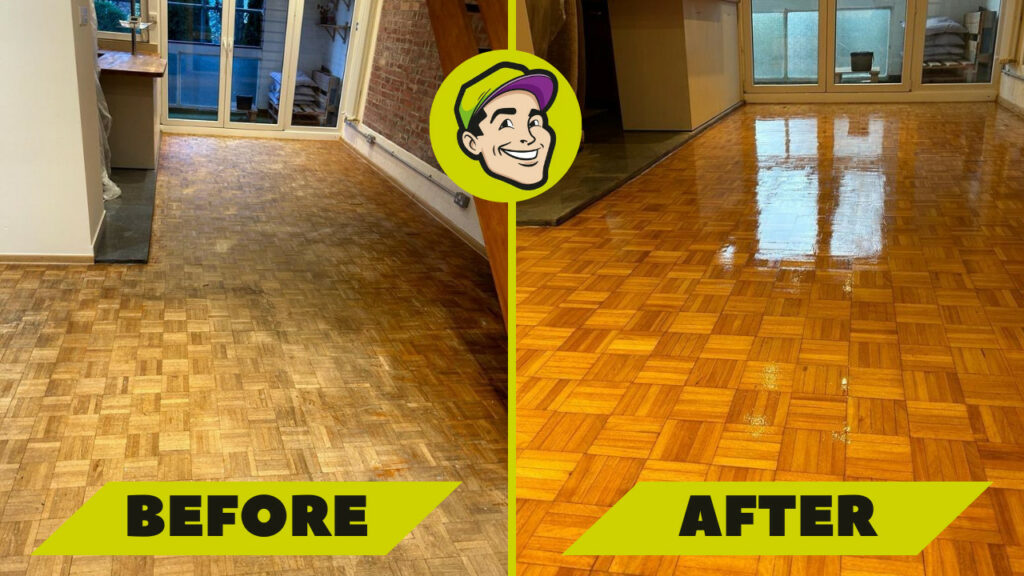
Conclusion
Revitalising educational spaces with Granwood floor restoration offers numerous benefits that extend beyond mere aesthetics. A well-maintained floor can significantly enhance the learning environment, contributing to student and staff well-being, safety, and overall school pride. The restoration process not only preserves the school’s investment in its infrastructure but also promotes a culture of respect and care within the educational community. As schools consider the impact of their physical environment on educational outcomes, it’s clear that maintaining and restoring flooring is not just a matter of cosmetic improvement but a crucial component in creating a conducive learning atmosphere. By choosing the right professionals for the job, schools can ensure that this investment is managed wisely, with quality results that support both current and future generations of learners. Investing in Granwood floor restoration is a wise decision for educational institutions aiming to provide the best possible environment for their students and staff. It underscores a commitment to maintaining high standards and supports the educational mission by enhancing the physical spaces where learning occurs. As we look to the future of education, let’s continue to recognise and act on the importance of well-maintained facilities in shaping positive school experiences and outcomes.

Sanding
We provide virtually dust-free sanding with our continuous belt machinery with mobile extraction units, giving you a safer environment for your family.
Oiling
This organic finish not only adds beauty to your home but also has exceptional water-repellent characteristics, making it easier to clean and maintain.
Waxing
This natural floor finish offers the softest and most mellow appearance – and leaves your floor able to breath.
Buffing
Using soft buffing machines (and hand-polishing where required) will bring a wonderful sheen to your newly-finished floor.
Repairs
We offer a full assessment of your wooden floors to determine what repairs are needed to provide the perfect working surface for the later stages of sanding, staining and sealing.
Restoration
We offer a comprehensive restoration process designed to address floors that are improperly fitted or damaged over time through wear and tear.
Request a fixed price quote for your wood floor restoration now
Simply enter your postcode below to get started.
Services
Wood Floor Sanding Wood Floor Restoration Wood Floor Scratch Repair Squeaky Wood Floor Repair Parquet Floor Sanding Parquet Floor Restoration Commercial Floor Sanding Church Floor Sanding Community Centre Floor Sanding School Floor Sanding Gap Filling Gap Filling with ResinCopyright © Mr Sander®
Privacy & Cookies Terms & Conditions Complaints Procedure Cancellation Rights Sitemap